Fitness is the most important element of an event horse’s career. It’s the best way to prevent injuries and keep him healthy and happy into his later years. Asking a fatigued horse to continue performing can be dangerous, uneducational and discouraging—for both of you. For example, if your horse runs out of steam toward the end of a cross-country course, he’s more likely to make a mistake at one of the remaining questions, putting you both at risk of a fall and/or injury. If you’re at a competition in which the show jumping is the last phase, such as a CCI long-format three-day event, he won’t be able to perform his best in show jumping if he finishes the cross country exhausted.
The same holds true for you. In both jumping phases, your job is to sustain a correct, balanced position that never interferes with your horse’s own balance and jumping style. It’s also your job to help keep him in a proper frame and balance in the approaches to the jumps when he begins to tire. This requires physical (and mental) strength and endurance, especially if you have a very strong and/or lazy horse (yes, some horses can be both!), which can be exhausting. That’s why it’s so important to attend to your own fitness program as much as your horse’s.
How can you tell if you or your horse is not fit enough for your level? Imagine that he is like a car with five gears. On a really challenging cross-country course, you might lose a gear or two. I have ridden upper-level horses around five-star courses who sometimes lost the fifth gear after eight or nine minutes. That meant they couldn’t produce more speed instantly when I asked them to accelerate. But I have also ridden horses who found an extra gear toward the end of a top course and were able to gallop even faster to the finish.
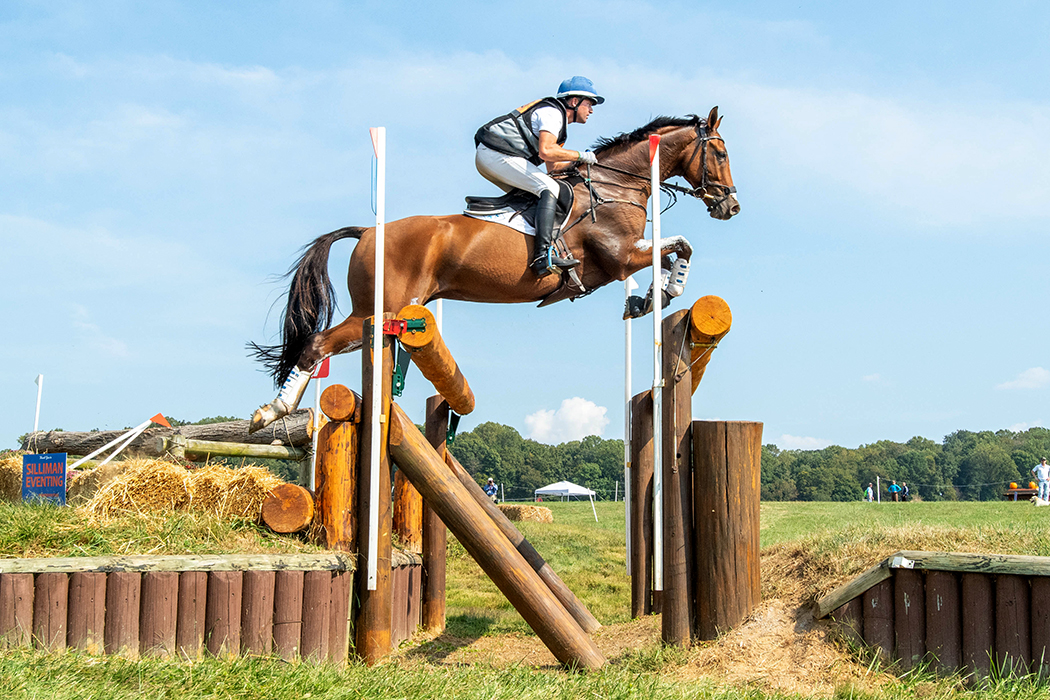
Losing a gear is not necessarily a problem, so long as your horse still has enough gears to tackle the final fences and get home safely. However, losing more than a gear or two can be unkind and even dangerous. Kicking a horse home in “neutral” is unfair. Last year I rode a very careful three-star horse on a very muddy course. She was really overjumping the fences, which was tiring in the heavy mud. Toward the end of the course, it felt like she’d lost three gears. Navigating the final big hill and two big combinations would have been too much to ask of her in that condition, so I retired on course, saving her health and confidence for future competitions.
Listen to your horse. If he starts to slow down at any point on the cross-country course, give him a little encouragement on the landing side of the next jump—a cluck or tap of the whip. If he doesn’t respond by accelerating, back off the speed a bit on the next flat or downhill stretch to give him a chance to take a deep breath. This sometimes helps horses find a second wind. If he doesn’t seem to have the energy to go faster but is still jumping in good, safe form, continue home at that speed. On the other hand, if his jumping form is deteriorating, pull up.
After you cross the finish line, examine him closely. How hard is he breathing? Is he still looking for something else to jump or has all of his usual enthusiasm disappeared? Did he have a subsequently unusual number of rails down in show jumping?
Ask yourself similar questions. Throughout your ride, do you feel strong enough to stay out of the saddle in between fences and apply the necessary aids to create the canter you need in front of them? At the end of the course, are you exhausted and out of breath? When you watch videos of yourself, does your position look strong and steady—or are you flopping around in the saddle? As with your horse, it’s OK to be tired at the end of a ride, but you still need the strength and endurance to do your job effectively.
If you’re not happy with the answers to any of these questions, it’s time to reevaluate your fitness program.
Essential Elements of a Fitness Program
Every good conditioning program produces: 1) endurance, 2) “wind” fitness (cardiovascular capacity) and 3) the specific muscle strength and coordination required for all three phases of the sport. Different skills require different muscles. Unlike racehorses (and their jockeys), who only have to gallop on flat ground, event horses and their riders must also develop the right muscles to perform dressage and jump different kinds of obstacles—both on flat and varying terrain. Their programs must include the following elements:
• Endurance-building “roadwork.” Strengthening bones, muscles and other soft tissues requires many miles of long, slow distance work. The bulk of this should be done at the walk, both in the lead-up to the competition season and during it. I recommend walking a total of at least 20 to 30 minutes daily (up to 60 minutes for upper-level horses, in twice-daily sessions), six days a week, in part depending on your horse’s turnout situation. The more turnout he has, the less walking is necessary.
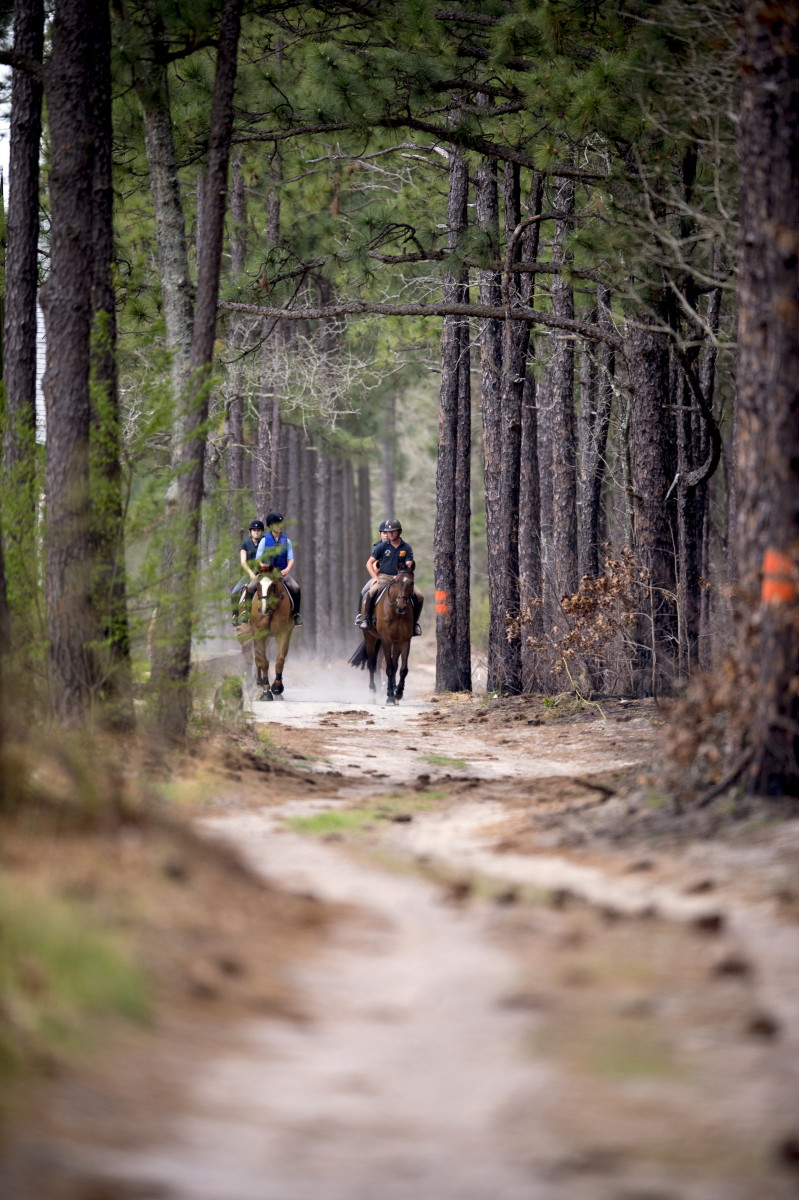
This “roadwork” can be done on trails, roads, pastures and even in the ring, incorporated into your regular training rides. Start every schooling session with at least 10 minutes of walking on a loose rein and finish with another 10 to 15 minutes, giving your horse time to relax and think about what he just did.
Since I began putting my horses on an automatic walker, they’ve experienced a substantial decrease in injuries. If you don’t have access to a walker and are also limited time-wise, consider hiring a local kid to hack your horse two or three days a week. It will pay off in the long run.
After building a foundation with walking roadwork in the beginning of the season, gradually incorporate trot sets, starting with two approximately 15-minute sets, each followed by five-minute walk breaks, and building up to 30 minutes nonstop mid-season twice weekly, depending on your horse’s level and type. (For example, a big, heavy warmblood will have different fitness needs than a light-boned Thoroughbred.) Discuss your horse’s specific needs with your trainer. Like the walking roadwork, these trot sets can be done on trails, roads, pastures or the ring, so long as the footing is safe (not slippery, rocky, etc.). Ask your horse to “power on” in a forward trot with light contact. Don’t try to force him into a dressage frame unless he’s grabbing the bit and throwing his head in the air. In that case, spend a little time in the beginning asking him to soften and supple on the bit, then gradually lighten the contact as much as possible.
• Hillwork. This is one of the best ways to strengthen your horse’s muscles, improve his balance and even test his straightness. If you’re lucky enough to have access to hills, gradually incorporate hillwork into his walk/trot sets. Again, work with your trainer to determine the suitable amount and frequency of hillwork for your specific horse. Use common sense. If your horse is struggling on the hills in competition, consider increasing the frequency of hillwork sessions at home.
Walk and trot both up and down the hills. I like to use serpentines, too. For example, start by trotting straight up the left side of the hill, then continue trotting as you turn right and go straight down the hill. At the bottom, turn left before heading straight up the hill again. Continue this serpentine across the entire hill, finishing on the right side of it. Begin the next serpentine on the right side of the hill and work your way back across to the other side.
During your hillwork, pay close attention to how your horse feels. Does he tend to swing his haunches to one direction or the other? Is it hard to keep him straight on the uphill or downhill? If he’s favoring one side more than the other, he may just be demonstrating a normal one-sidedness that can be improved with flatwork. Or he may be dealing with a subtle physical condition or lameness. Discuss any concerns with your trainer and/or veterinarian.
• Speedwork, or “gallops.” This is essential for developing your horse’s “wind” fitness and getting both of you accustomed to the cross-country speed you’ll be traveling at in competition. Before initiating any jumping or speedwork, your horse must have a solid foundation of at least three to five weeks of walk/trot sets under his belt (again, depending on his type and fitness) and should be doing at least 20 minutes of trotting. Most trainers use intervals: galloping at a precise speed for a certain number of minutes, then walking for several minutes, then repeating the cycle. As with walk and trot sets, gradually lengthen the gallop sets as your horse’s fitness improves. For example, you may start with three one-minute canter sets with two minutes of walking in between, then eventually progress to three two-minute sets with one minute in between. My horses gallop once every five days but, again, this frequency should be customized to suit your horse’s specific needs.
To strengthen your horse’s muscles evenly, spend an equal amount of time on each lead. To change leads mid-set, either make a simple change through the trot or a flying change, if your horse knows how. Making the change over a small cavalletti or jump can be helpful, as horses often naturally swap leads in the air while jumping.
To strengthen your own muscles, shorten your stirrups to cross-country length. (For tips on how to determine your correct cross-country length, read Jim Wofford’s column “Cross-County Speed Magnifies Mistakes” in the April 2013 issue of Practical Horseman or go to PracticalHorsemanMag.com.) Make yourself stay in galloping position throughout each entire set—with your leg firmly against the horse and directly underneath your body, your seat well out of the saddle and your hip angle slightly closed. Maintaining this position for even one minute can be challenging. If you’re not sore the day after your first gallop sets of the year, you’re not doing it right! As your strength improves over time, challenge yourself further during the gallops by practicing lengthening and shortening your reins and shifting your weight slightly back and forth, all without dropping back into the tack.
• Dressage and jump schools. All event horses should school on the flat and over fences routinely to keep the muscles for those skills in tune. Exactly how frequently you school either discipline, however, depends on what most needs improvement. This can vary from week to week and competition to competition. Say you have a disappointing dressage test. You may want to increase your focus on dressage for the next several weeks, schooling three or more days per week and doubling your lesson frequency. Or, if your horse gets tense in show jumping, riding him daily over very small fences (2-foot max) will help him relax.
One of the goals of both dressage and jump schools is to improve your horse’s rideability. There’s a difference between having a fit, rideable horse and one who runs away with you. Rideability matters even more when your horse begins to tire on course. Being able to get him in front of your leg and in a balanced shape is essential for safe jumping.
• Time off. One of the most important things all event horses need is breaks, for both their mental and physical health. If possible, I recommend giving your horse an entire day off every week. If you have access to good pasture, turn him out for the day. Otherwise, make up for that with some mellow walking under saddle or on an automatic walker.
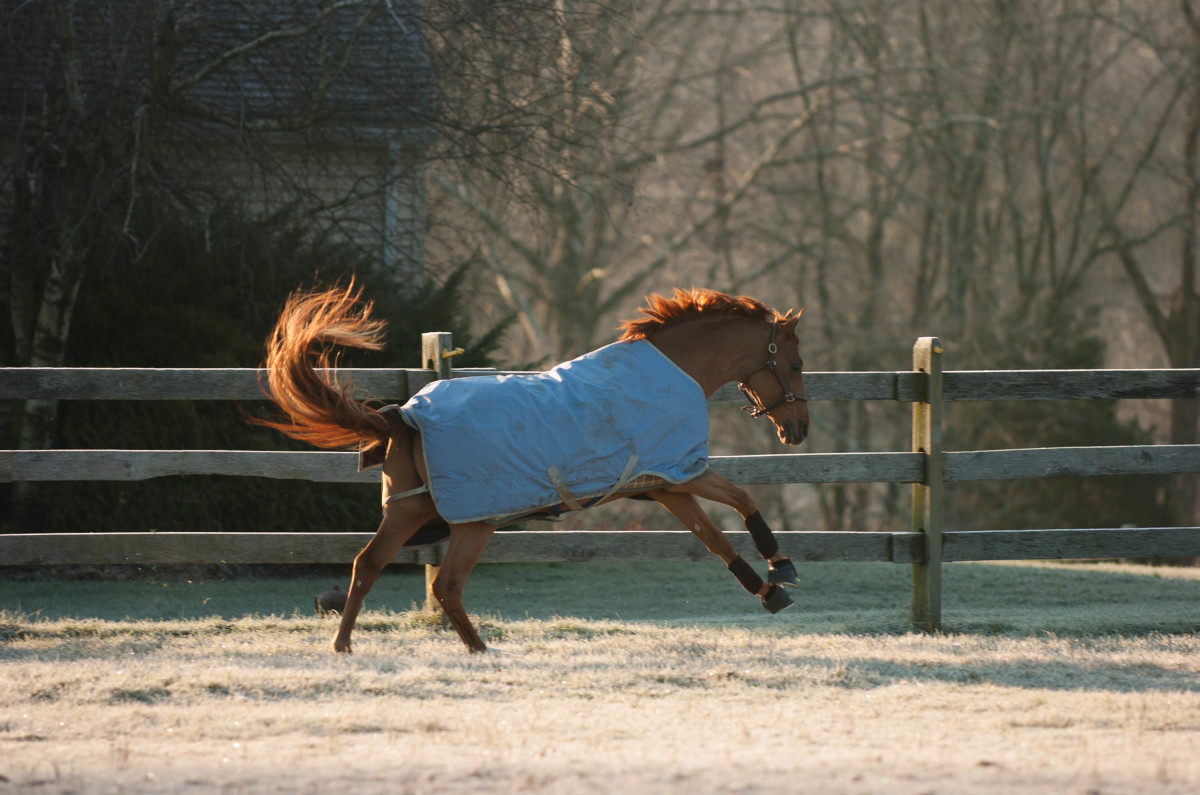
Amy K. Dragoo/AIMMEDIA
I also recommend giving every event horse a vacation at the end of the season—at least two weeks for lower-level horses and longer for upper-level horses. In just two weeks, your horse won’t lose much fitness, but it will do his brain a lot of good. He’ll come back to work fresher and more enthusiastic about his job.
Riders benefit from breaks, too. Spend some time with your friends and family over the holidays. After a healthy “reboot,” you’ll be even more excited to get back in the tack.
If your break is longer than two weeks, use common sense easing back into your conditioning program. Just as you wouldn’t run 10 miles on the treadmill after a three-month hiatus, don’t ask your horse to do any intense dressage, jumping or speedwork right away. Start with a 25- to 30-minute trail ride, then gradually build on that over time.
Post-break is a good time to evaluate your horse’s body condition. If he’s an easy keeper who puts on extra pounds over vacation, discuss with your veterinarian or nutritionist how to trim his weight down in time for the competition season. The more unnecessary weight he carries around the cross-country course, the more vulnerable he is to fatigue and injury. That’s why you see so many lean horses at the Land Rover Kentucky Three-Day Event. They might show a rib or two, but their muscle tone proves that they’re in prime condition.
This is a good time to reevaluate your own program, too. Riders come in all shapes and sizes—and we all deserve a little indulgence over the holidays. But, if you think you had a few too many Christmas cookies, get yourself to the gym!
Putting It All Together
There are many different ways to combine the above elements into an effective training program. Here are some tips for designing one that fits your specific horse and situation:
1. Work closely with your team. Consult your trainer, veterinarian and farrier (and equine nutritionist, if you have access to one) about every aspect of your conditioning program. They can help you personalize it to address any training or health issues. For example, if your horse has weak feet, your farrier might recommend that you avoid pavement in your walk/trot sets. On the other hand, if he’s recovering from a soft-tissue injury, your veterinarian might direct you to seek out firmer footing (to help the healing tissue realign properly) and avoid soft footing, like deep sand.
2. Write it down. Start each year with a long-term plan, noting all of your major goals. Do you hope to move up a level? Ride in a three-day event? Improve your skills in a particular phase? Discuss these goals with your team.
At the end of every competition, write down your impressions of your horse’s performance and fitness. This will help you identify what needs to be tweaked in his program—and will give you a good basis to compare to later. Be honest with yourself about what you want to improve. Nobody is a master in this sport; we can all improve something!
3. Train for the terrain. This is very important from both a fitness and confidence perspective. If you’re going to compete on a very hilly cross-country course, you and your horse should both have plenty of practice riding hills at home. Before signing up for any competition, educate yourself about its terrain—even if that means traveling a long distance to watch a competition there.
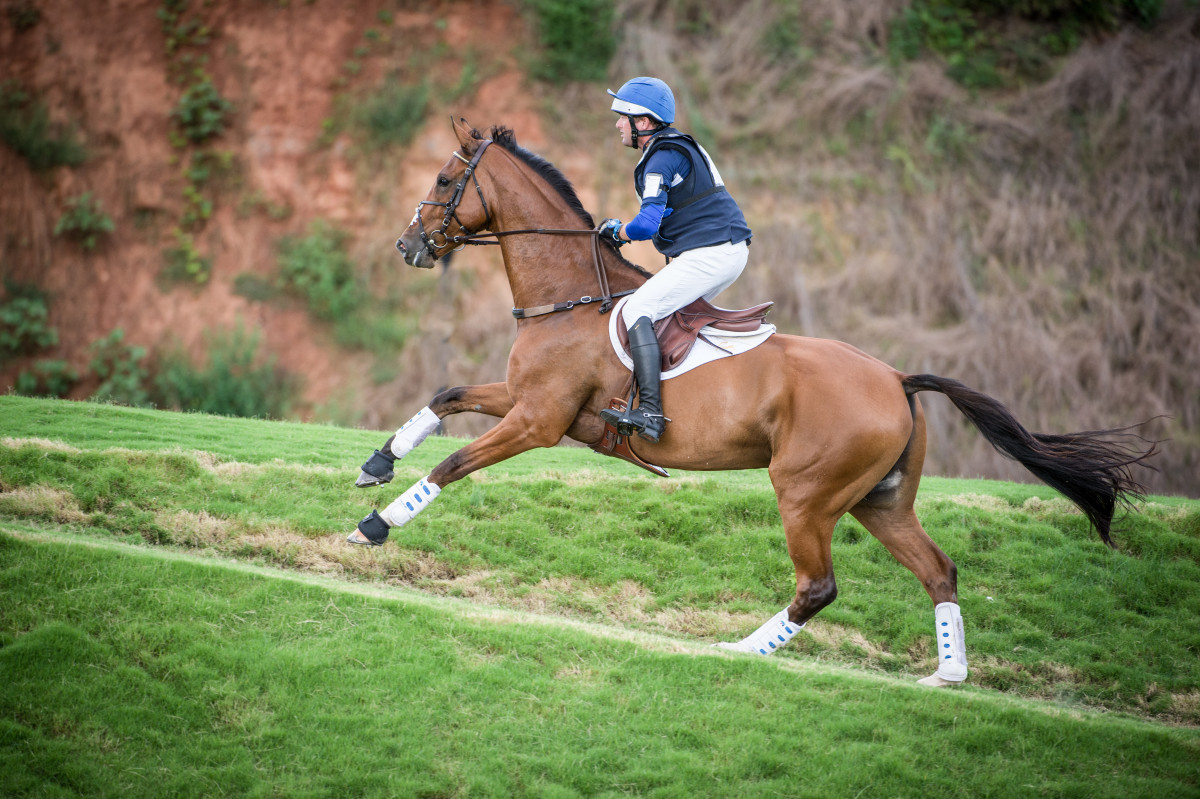
Leslie Threlkeld Bryant for Shannon Brinkman Photo
In an ideal world, we’d all have the exact type of terrain at our training facilities that we face in competition. When that’s not the case, we just have to play with the hand we’re dealt. Sometimes that means doing trot and canter sets in the indoor arena when there’s a foot of snow outside. Or it may mean increasing the speed and distance of your canter sets to compensate for an upcoming course that is hillier than your home facility. Remember that cantering in an open, rolling pasture requires different balancing skills than in an indoor arena, so find a way to practice the former as much as possible—even if that means occasionally trailering to another facility.
In general, the more types of footing you can train on the better (except for anything extremely rocky, heavy, slippery, etc.). You can increase the difficulty of speedwork by doing it on an incline—just beware that you may need to decrease the distance and/or speed to balance the added demands of the incline. Again, discuss this with your trainer.
4. Be disciplined—but flexible. The only way to get your horse and yourself truly fit is to stick to the program. No cheating—30 minutes is 30 minutes! But how you put all the elements together is up to you. Fitness work doesn’t necessarily have to be done on its own day. There’s nothing wrong with doing a few canter sets before and/or after a jump lesson or doing roadwork after a dressage school. Most trainers avoid doing jumping and speedwork on back-to-back days, but even that’s not set in stone. After all, we ask our horses to do it in competition. So do the best you can—and try not to overcomplicate things.
Remember, there are many roads to Rome. If you’re not happy with the results of your fitness program, make a change!
About Will Faudree
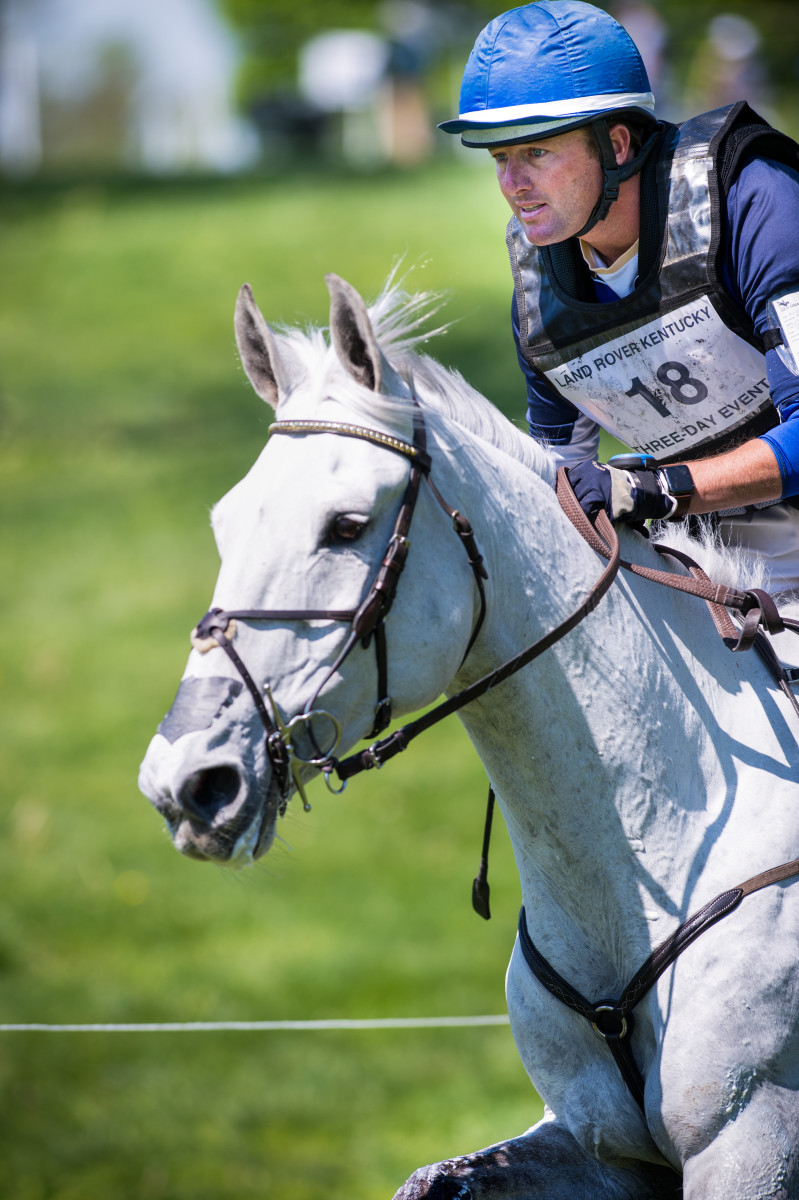
Five-star eventer Will Faudree moved from his hometown of Midland, Texas, to Pennsylvania to be a working student for Olympic gold-medalist Phillip Dutton after high school. In 2002, he was named the U.S. Eventing Association Young Rider of the Year. The following year, he received the Lionel Guerrand-Hermès Trophy for exemplifying the U.S. Equestrian Team’s ideals of sportsmanship and horsemanship. He rode on the 2003 gold-medal-winning team in the Pan American Games and the 2006 World Equestrian Games team, was a traveling reserve member of the 2004 Olympic team, and was short-listed for the 2010 World Equestrian Games and the 2012 Olympics. Based in Southern Pines, North Carolina, Will also coaches, trains and teaches clinics.
This article originally appeared in the Winter 2019 issue.










